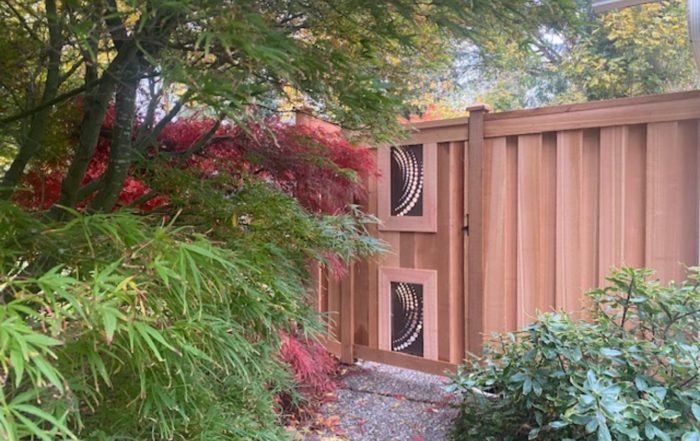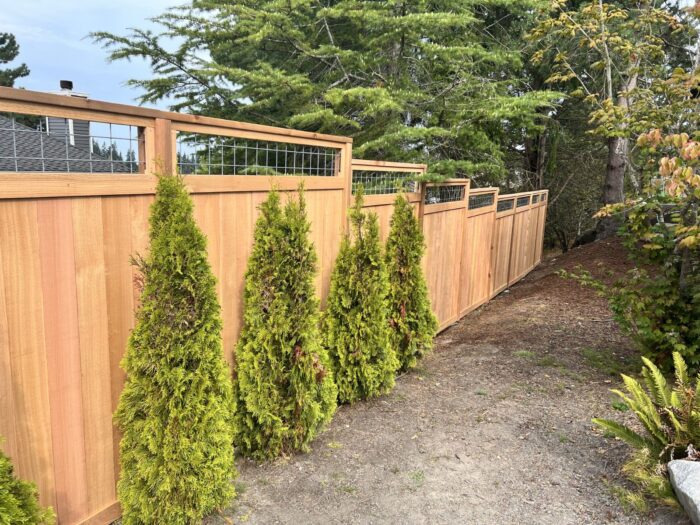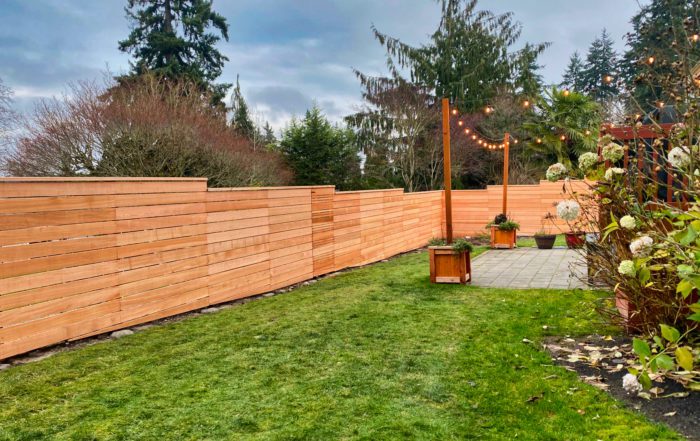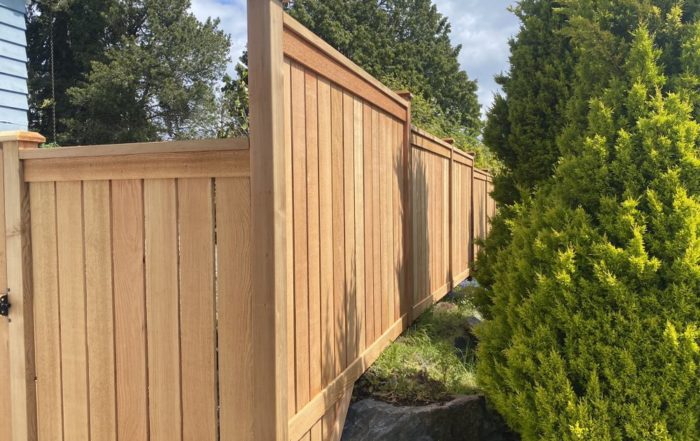A harsh winter can take a toll on your fence, leaving it looking worn out and in dire need of a refresh. As the weather warms up and spring approaches, it's time to turn your attention to this often-neglected part of your property...
Introduction
In Seattle, a cedar fence is more than just a boundary – it’s a significant investment that elevates the aesthetic and security of your property. Much like any worthy investment, your cedar fence demands care, particularly during those vibrant summer months. Essential tasks like cleaning, staining or sealing, prompt repairs, managing encroaching vegetation, and providing some much-needed shade should top your maintenance list.
Cedar is the stalwart of fencing choices. It’s durable, naturally resistant to rot and those pesky bugs, and its rich reddish-brown hue simply oozes that comforting, down-home charm. But don’t be fooled by its robust character. The sizzling summer season in Seattle, with its intense heat, relentless UV rays, and the sporadic soaking from a rainstorm or your own sprinkler system, can truly challenge your cedar fence.
However, despite its natural durability, a cedar wood fence, especially horizontal cedar fences, requires regular maintenance to preserve its beauty and extend longevity. Just as we adjust our routines with the changing seasons, it’s vital to adapt our fence care approach. As we transition into the summer, it’s a good time for a pre-summer inspection, repair of any damages, cleaning, and application of preservatives. This guide aims to provide you with helpful tips and steps to effectively maintain your cedar fences, ensuring they remain in top shape throughout the season.
Understanding Cedar Fences in Summer
To fully appreciate and maintain your cedar fence, it’s vital to understand the unique challenges this material faces in summer. Cedar, while robust and resilient, is not impervious to the seasonal elements. The Pacific Northwest summer sun, while welcome, brings with it UV rays that can fade the rich color of your cedar wood fence. Furthermore, any areas of direct contact to the sun become susceptible to wood warping and splitting. When unmitigated moisture penetrates the cedar fence, one might encounter issues such as rot or mold.
However, let’s not underestimate the benefits of a properly maintained cedar fence in summertime. A well-prepped fence provides shelter from the heat by shading your yard and reducing your cooling costs. It also serves as a windbreak, which can help protect any young trees and plants in the area. And of course, it will continue to be the envy of the neighborhood with its timeless style and naturally-aged aesthetic.
The bottom line: your cedar fence requires regular care for it to withstand Seattle’s summer season successfully! With that in mind, let’s review essential maintenance tips that will help you protect and preserve your cedar wood fence.
Inspection and Repairs
Inspecting your cedar fence at the start of summer is a fundamental step in your maintenance schedule. Early July is a great time for this, before the August heat. To start, look for any signs of damage, such as loose or missing slats, rotten wood, or broken cedar gates. If your fence is sagging or leaning, it’s time to address it immediately as it may pose safety concerns.
Inspection Time
Start by thoroughly examining each section of your fence. We’re looking for loose boards, cracked or split wood, warped panels, or any signs of rot. Remember, if you spot any issues, it’s best to tackle them straight away before they become a bigger problem.
Check for Stability
One important aspect to keep an eye on is the overall stability of your cedar fence. Check that all posts are firmly anchored in the ground and haven’t shifted due to soil erosion or excessive moisture. And don’t forget about the connections between the posts and rails – these areas can loosen over time. Our friends, the fence builders in Seattle, can’t stress this point enough.
Reinforce Weak Joints
The next step is to tighten screws or nails and reinforce weak joints. This will help maintain the structural integrity of your residential fence, ensuring it can stand tall against the summer elements.
Assess your Cedar Gates
Now, turn your attention to any cedar gates integrated into your fencing system. Make sure they’re operating smoothly and that hinges are secure and functioning properly. A little lubrication goes a long way in preventing unnecessary strain during opening and closing.
Pro Tip: Set a Regular Inspection Schedule
The heat of the summer can take a toll on your cedar fence, so it’s best to get ahead of any potential problems. Schedule a thorough inspection early in the summer, ideally by July, before the peak August heat sets in.
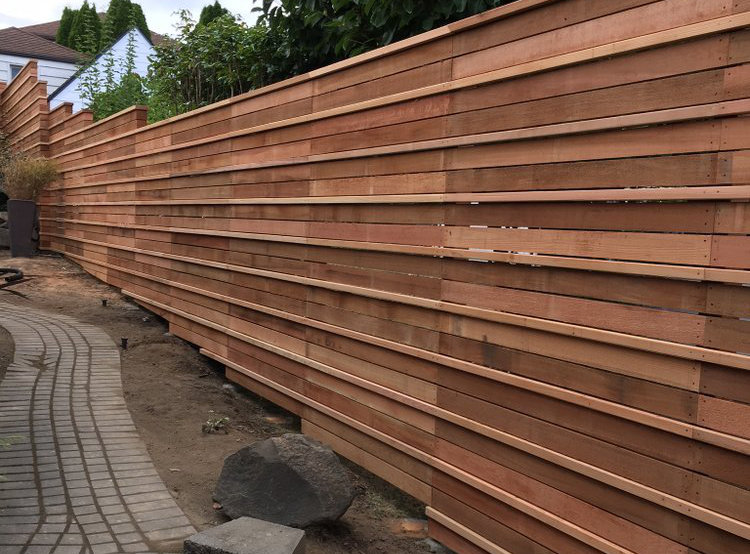
Cleaning Your Cedar Fence
Cleanliness is a core pillar of cedar fence maintenance, ensuring that the beauty of the wood is not obscured by layers of dirt, grime, and organic growth. This process, however, does require a delicate touch to not inadvertently damage the cedar’s surface.
1. Gather Your Tools
For this task, you’ll need a garden hose with a spray nozzle, a bucket, a gentle brush with soft bristles, and a mild detergent. It’s essential to avoid harsh chemicals that can strip the wood of its natural oils.
2. Prep the Fence
Start by removing any large pieces of debris like leaves or twigs from the fence. Then, use the garden hose to dampen the cedar. This will make it easier for the cleaning solution to penetrate the dirt and grime.
3. Apply Cleaning Solution
Mix water and mild detergent in a bucket to create your cleaning solution. Apply this mixture to the damp fence using your soft brush, scrubbing gently to avoid scratching the cedar surface.
Pro Tip: Cleaning Products:
Consider using special products like a wood brightener, which can enhance the natural beauty of the cedar and make it more receptive to the stain
4. Rinse and Dry
After scrubbing, thoroughly rinse the fence with your garden hose to remove all soap residue. Allow the fence to air dry completely before moving on to any sealing or staining. This step is crucial as sealing damp wood can lead to issues like mold growth or premature sealant failure.
Pro Tip: When Using a Pressure Washer
Before you unleash the full force of your pressure washer, it’s wise to take it for a test drive. Choose a discreet spot on your fence, somewhere out of the direct line of sight. That way, should any mishaps occur, you’ve saved the visible sections of your fence from potential harm. As for that cedar fence of yours, according to the manuals, it generally prefers a pressure range of about 500 to 800 PSI. Just keep that in mind, and your cedar fence will continue standing tall and looking great for many summers to come.
It’s best to perform this cleaning routine at least once every summer to ensure your cedar fence continues to shine in all its glory. Regular cleaning not only helps maintain the appearance of your cedar fence but also extends its lifespan by preventing the buildup of harmful substances like mildew and mold.
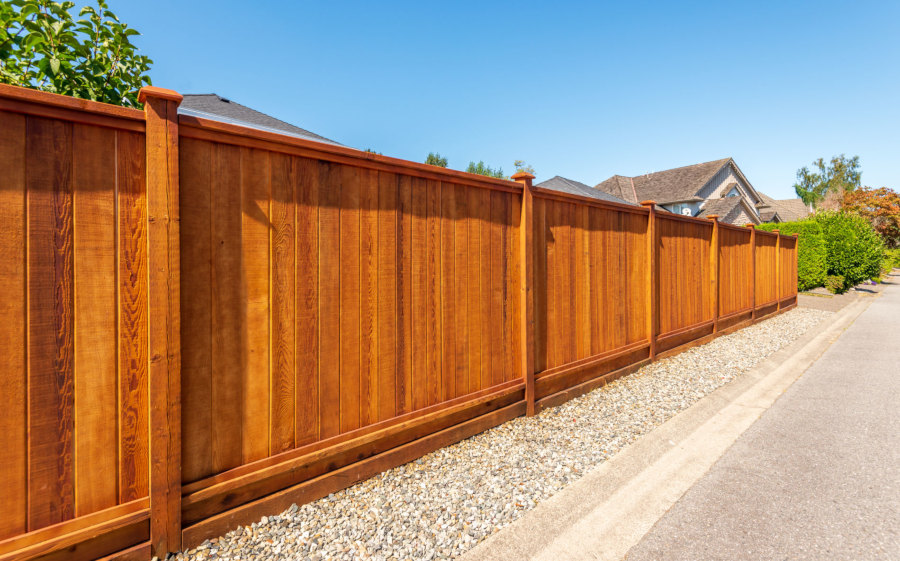
Stain or Sealant Application
Staining or sealing your cedar fence is a critical step in the maintenance schedule, offering an additional layer of protection against the harsh elements of the Pacific Northwest. This process not only enhances the stunning aesthetic of the cedar but also helps lengthen its lifespan.
1. Choose the Right Product
The first step involves selecting the right product that caters to your fence’s specific needs. Stains come in various finishes, from clear to solid, each offering a different level of sun protection.
Semi-transparent sealers, which contain pigmentation, can enhance and alter wood color while providing significant UV protection. In contrast, translucent sealers maintain the wood’s natural appearance but offer less UV protection due to their lack of pigment.
Pro Tip: Translucent Sealers:
If you opt for a translucent sealer, you’ll need to treat the fence more often to prevent graying
2. Pre-application Preparation
Before applying any product, ensure your cedar fence is clean and thoroughly dry. Consider sanding any rough areas for a smoother application. Remember to cover surrounding plants with a drop cloth to protect them from any potential overspray.
3. Check the Wood
Conduct a water test to check if the wood is ready to absorb the stain or sealant. Spray a small section of the fence with water. If the water forms beads on the slats, you may need to lightly sand the slats in the direction of the wood grain. If the water successfully penetrates the slats, it indicates that the fence is ready to absorb the stain
4. Product Application
Using a brush, roller, or sprayer, evenly apply the stain or sealant to your cedar wood fence. Always follow the manufacturer’s instructions regarding the number of coats to apply, drying times, and any precautions.
5. Regular Re-application
Stains and sealants gradually wear away, especially in areas exposed to heavy sun or rain. So, plan to reapply every few years as part of your regular cedar fence maintenance schedule.
Pro Tip: Weather Conditions
Choose a day with optimal weather conditions to carry out the staining or sealing process. The ideal conditions are when the temperature ranges between 50 and 80 degrees Fahrenheit, with low to moderate humidity, and no precipitation expected for the next 24 hours
By following these simple steps, you’ll ensure that your cedar fence retains its beauty and durability throughout the summer months in Seattle.
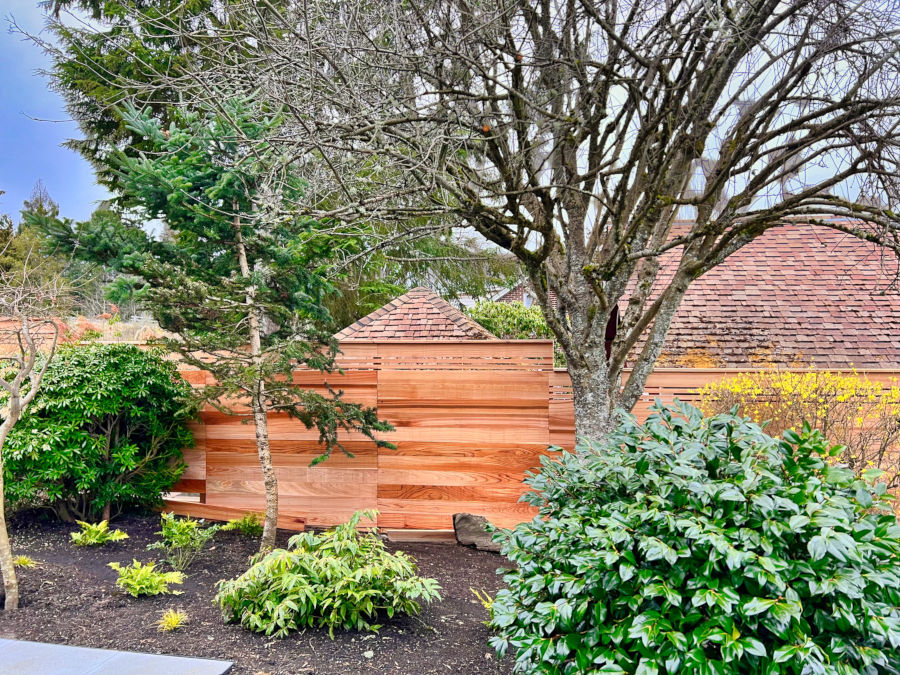
Vegetation Control
Controlling vegetation around your cedar fence is an often overlooked, yet crucial, part of your maintenance schedule. Overgrown plants can trap moisture against the wood, accelerating rot and mildew growth. Plus, certain invasive species can wrap around or burrow into your fence, causing structural damage over time.
Trim Back Overgrown Plants
Begin by trimming back any overgrown plants, vines, or trees that are in close proximity to your fence. Aim to create a clear space of at least two feet around your fence. This will help reduce moisture build-up and prevent potential damage from plant growth.
Remove Invasive Species
Next, remove any invasive plant species that have made their home near your fence. These plants can be aggressive growers and may cause significant damage if not kept in check. If you’re unsure about what to look for, consider consulting with a local horticulturist or landscaping professional.
Keep the Fence Clear
Regularly sweep or blow off leaves, pine needles, and other plant debris that collects on the horizontal surfaces of your fence. These can trap moisture, leading to the accelerated aging of your cedar wood fence.
Use Safe Herbicides
For those stubborn plants that manage to muscle their way through your gravel or mulch, consider using an herbicide designed specifically for use near wooden structures. Make sure it’s labeled safe for residential fences and, as always, follow the instructions to a T.
Mulching
Lastly, consider mulching around the base of your fence. Mulch can help prevent weed growth, while also allowing water to drain away from the fence, reducing the risk of rot.
Maintaining a buffer zone between your fence and the vegetation can significantly extend the lifespan of your cedar fence, ensuring its longevity and aesthetic appeal. As always, if you’re unsure or need a hand, don’t hesitate to reach out to your local fence builders. Keep up that good work!
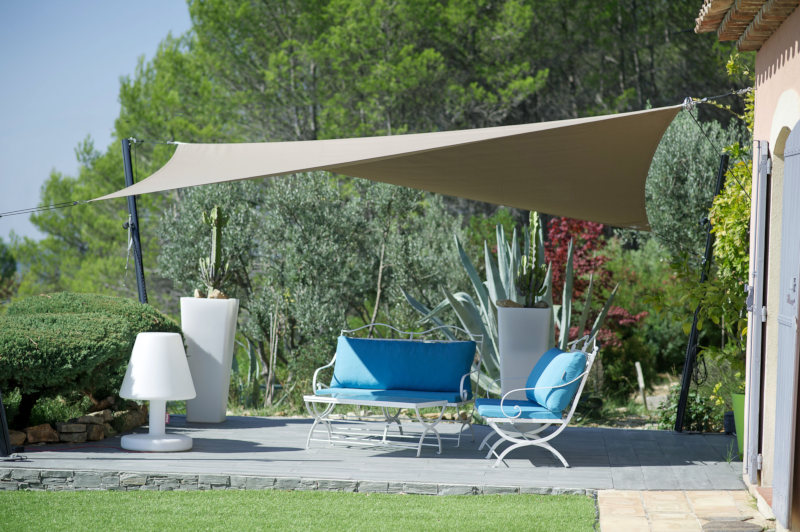
Providing Shade
Providing shade for your cedar fence is a smart way to reduce potential damage from the sweltering summer sun. Prolonged exposure to direct sunlight can fade your fence’s color and dry out the wood, increasing its susceptibility to splitting and warping.
Not to worry, we have some practical solutions that involve providing shade for your fence:
Install a Shade Cloth
One effective method is to install a shade cloth over areas of your fence that take the brunt of the sun’s rays. These cloths are readily available at home goods stores and can be easily secured to your fence using tie wraps or nails.
Plant Shade Trees or Shrubs
Alternatively, you could plant some shade trees or shrubs along your fence line to provide natural sun protection. This can also enhance the aesthetics of your landscape. Make sure to select species that won’t grow too large or invasive, causing damage to your fence in the long run.
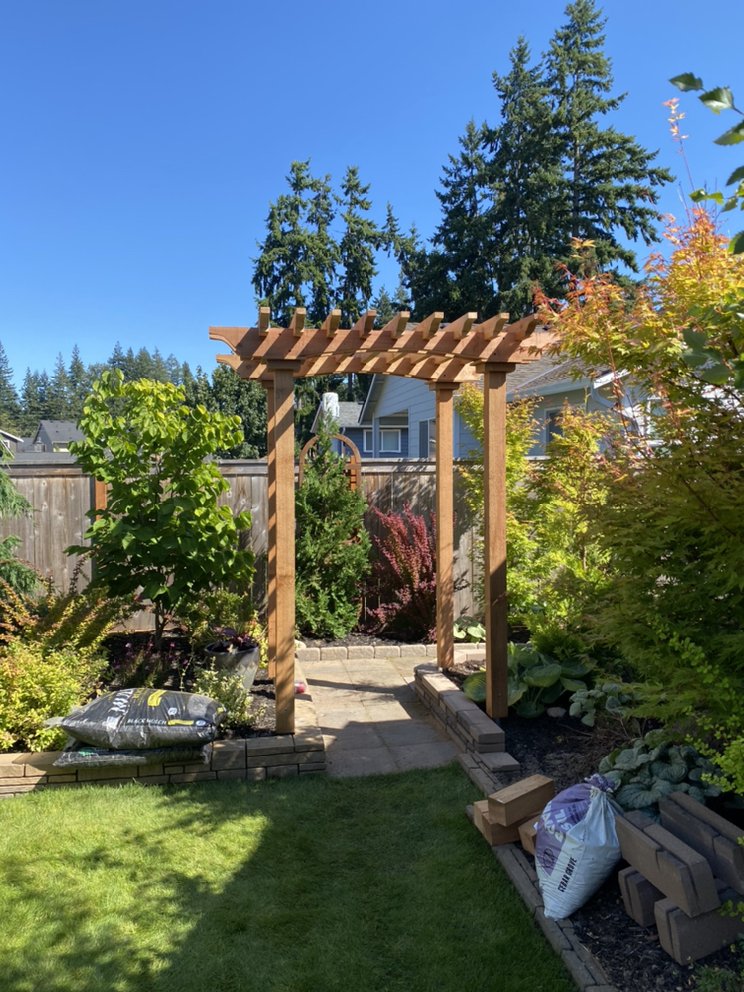
Install a Pergola or Gazebo
Installing a pergola or gazebo near your fence can also provide some much-needed shade, especially for smaller fenced areas or for fences around patios. Plus, it adds a nice touch to your outdoor living space.
Installing Trellises or Lattice Panels
An effective and elegant way to cast some shade on your cedar fence is to install trellises or lattice panels right next to it. They not only provide a reprieve from the sun but also add a touch of class to your backyard. The design of your horizontal cedar fence complements trellises or lattice panels perfectly, and as sunlight trickles through, it creates a dappled effect, reducing direct exposure.
Integrate Natural Sources of Shade
Now, if you’re more of a nature person, consider integrating natural sources of shade, like trees or shrubs, into your landscape design. Planting tall deciduous trees near your cedar fence is a great option. Their broad canopies cast substantial shadows, shielding your fence from the harsh sun. Plus, trees cool down their surroundings through a process called transpiration. It’s a win-win!
Remember, folks, while cedar is a durable type of wood that can withstand the elements, a little shade can go a long way in preserving its beauty and strength. As always, our fellow fence builders in Seattle are always ready to lend a helping hand for any of your fence-related concerns. Keep protecting that fence, and keep up the good work!
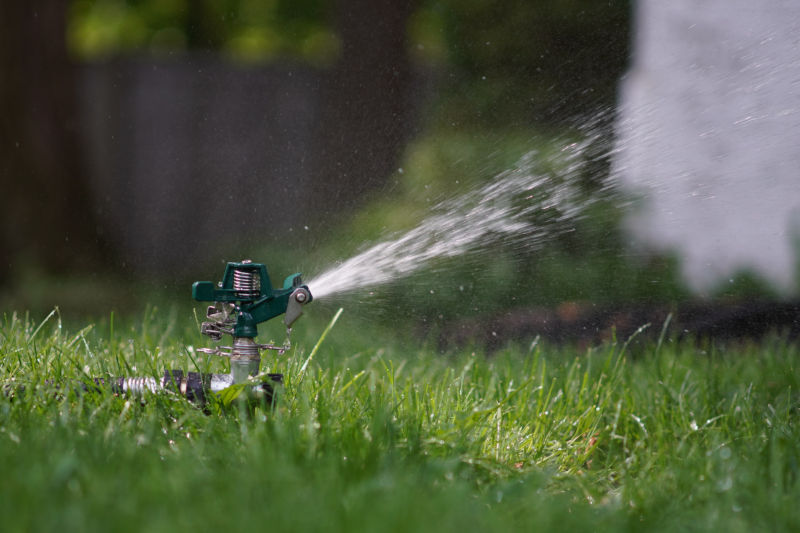
Don’t Forget the Sprinklers!
We Seattleites love our sprinklers. However, as much as we appreciate a green lawn they can really do a number on our fences.
As you conduct your summer maintenance on your cedar fence, it’s imperative not to overlook the role of your sprinkler system. Excessive moisture from sprinklers can be detrimental to your cedar wood fence, causing unwanted wood rot and mildew and reducing its lifespan.
Inspect the Sprinkler System
Take the time to inspect your sprinkler system thoroughly. Look for any signs of leaks and ensure that the sprinkler heads are functioning correctly. If you spot any issues, it’s best to address them immediately for the health of your fence and your lawn.
Adjust Sprinkler Heads
Check the direction of your sprinkler heads. If you notice that water is hitting your fence, it’s time to make some adjustments. Carefully redirect the sprinkler heads so that they’re watering your lawn and not your fence.
Install Sprinkler Guards
If adjustments aren’t enough, consider installing sprinkler guards. These handy devices can help control the direction of water spray, ensuring that your fence stays dry.
Regular Checks
Make it a habit to routinely check your sprinklers throughout the summer. Regular maintenance will help you catch any issues early and keep your cedar fence in top shape.
By keeping a careful eye on your sprinklers, you’ll add years to the life of your cedar fence, allowing you to enjoy its beauty for many summers to come. As your trusted fence builders in Seattle, we can’t stress enough the importance of this step in your seasonal maintenance schedule.
Conclusion
In conclusion, providing meticulous care for your cedar fences, particularly during summer, is an absolute necessity. This guide has walked you through the importance of a seasonal maintenance schedule, the steps for vegetation control, and how to provide shade to protect your fence from the harsh effects of the sun. Cedar fences, especially horizontal ones, are a fantastic addition to any residential property, and with the right maintenance, they can retain their beauty and durability for many years. Always keep in mind that professionals from fence builders in Seattle are readily available should you require any help with your cedar fence or gates. Here’s to a summer of enjoying your beautifully maintained cedar fences! Keep up the good work, folks!

